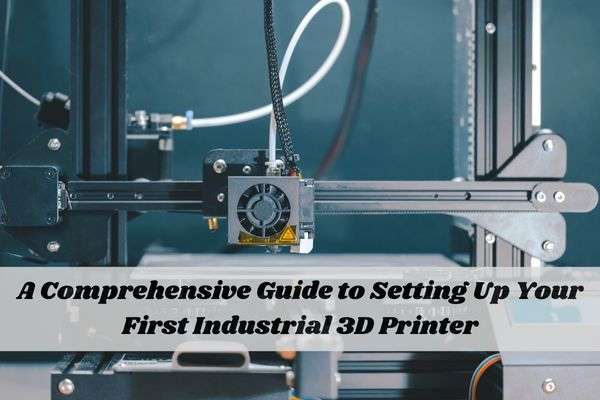
Sep 6,2024
3D printing is quickly becoming a game-changing technology, from manufacturing to the fashion industry, the medical profession, and culinary arts. Almost anybody can realize their ideas with the right plans and materials. This article provides all the details you need about 3D printing, including how easy it is to start.
Before we proceed further into the basic concept of 3D printing, let us dive a little into its history. The technology dates back to the 1980s when Chuck Hull developed the first rapid prototyping technology, stereolithography (SLA). Since then, many technological refinements have made 3D printing easy and cheap for anyone willing to exploit it.
3D printing is an additive manufacturing technique in which various objects are gradually built into layers from a given design file. Different 3D printers exist; you can print different plastics, metals, ceramics, or chocolates.
· Rapid Prototyping: Make a solid model in your design within a few hours and restrict the time of your design process.
· Customization: They are versatile in that each can be made according to your needs.
· Cost-effective: This technology is suitable for producing a few low-price items, making it ideal for individuals or small-scale businesses.
· Complex and Unique Designs: 3D printers can produce complex structures, components, and parts that would be very difficult, if not impossible, to build using conventional tools.
· Reduction of waste: They facilitate a streamlined design process, which results in low raw material and resource utilization costs.
First, it is crucial to identify some of the main classifications of 3D printers and their strengths and weaknesses. Among the several types available, the three most common are:
· Fused Deposition Modeling (FDM DIY 3D Printer): FDM printers are available, easy to use, and relatively affordable for starters. They employ a heated nozzle to selectively deposit molten plastic in a pattern over the build plate.
· Stereolithography (SLA): SLA printers use a laser to solidify a liquid resin sequentially layer-by-layer in a vat. They print at higher detail than FDM but are usually more costly and span longer.
· Selective Laser Sintering (SLS): SLS is mainly used in the 3D printing metallic parts. The fine powdered material is melted by a high-power laser beam to produce the required shape of the object. SLS machines, in particular, are considerably more expensive at the onset than FDM and SLA but can create intricate shapes and parts in various materials, including metals.
Below are the guidelines for selecting the first 3D printer: To make an optimal choice, consider the advantages and disadvantages of other 3D printing technologies, examine your wallet, and assess what you will be making.
· Print volume: For instance, a compact printer is possible if you aim to print small and simple items. Nonetheless, you should get a more sizable printer if you print larger objects or do relatively more complicated projects.
· Resolution and speed: Generally, FDM printers work faster while having a somewhat lower resolution than SLA printers. The resolution and speed you need will all depend on your print purpose.
· User-friendliness: When choosing printers for the first time, more emphasis should be paid to their ease of use. Some specific printer models allow more detailed setup and modification and can be helpful to advanced users.
· Material compatibility: Make sure the printer you choose will accept the type of material you wish to print.
Knowledge of the materials used by different 3D printing processes has a central role in the craft. Below are several printable materials compatible with varying techniques of printing:
· PLA (Polylactic Acid): All its parts are biodegradable and friendly to the ecological system, making it an excellent entry point into the 3D printing planet.
· ABS (Acrylonitrile Butadiene Styrene) is a plastic ideal for making working parts. It has many applications.
· PETG (Polyethylene Terephthalate Glycol) is a sturdy material that can withstand high temperatures and is, therefore, suitable for making mechanical parts.
· Standard Resin: This resin is suitable for use when an object is produced for testing or as a model. It provides a smooth surface finish with a high degree of accuracy.
· Heavy-Duty Resins: These are mainly produced for engineering applications and are tough and rigid.
· Flexible Resin: This material also has rubber-like characteristics, which make it ideal for producing products like phone jackets and elastic hinges.
· Metal Powders: Materials such as aluminum and titanium can form distinct metal components mainly intended for top-notch complicated uses such as aerospace and automobiles.
· Nylon and Other Polymers: Strong and light metals and alloys perfectly suit structural and functional elements, such as gears and moving parts.
A well-maintained 3D printer is one way of guaranteeing that high-quality prints will always be produced. Regularly follow these steps to keep your printer in good shape:
· Ensure the build plate is clean and leveled.
· This device is to be cleaned after it is used to ensure it is not blocked up.
· That is, reduce the contacting area between the moving surfaces when the moving parts are still in place, then apply an oil film between the moving surfaces to minimize friction and wear.
· Check and well tighten the belt tension to reduce upon layer alignment.
· Fix issues relating to the printer through a firmware update for better printer performance.
In layman's terms, 3D printing is ‘’virtual manufacturing,’’ whereby you design an object through computer software, which is physically printed and built to your desired dimensions. It allows the hobbyist, educator, or entrepreneur to fully embrace the potential of 3D printing as long as they are well-informed on the basics of 3D printing. Using suitable printers and tools, one can start a discovery process by creating objects not limited by reality.